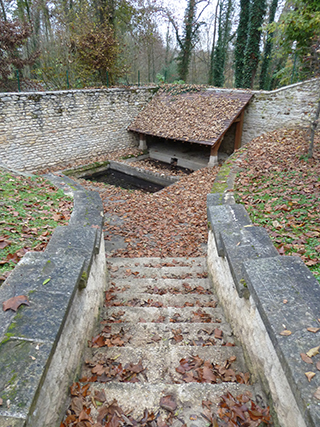Prochain point : lat="49.022437" lon="1.749338"

Saussaye Wash House
A 'willow plantation' that has since disappeared
Big washes...
Big washes usually occurred twice a year, coinciding with the arrival of spring and autumn, and could take almost a week to complete from the time the dirty washing was collected from the attics until it was returned clean to the cupboards. On the first day, the washing would be soaked in large basins of warm water. On the second day, it would be soaped with couch grass brushes. On the third day, it would be boiled in boilers filled with soda crystals and Marseille soap, to whiten it. Then, after it had cooled down, the women would take it in wheelbarrows to the wash house to be rinsed, following which they would beat and wring the sheets and towels by hand with all their might on the smooth stone or washboard. The next day, they would put it out to dry and air. Finally, it would be ironed, folded and stored in the farm's big cupboards. The triangular ironing utensil first appeared in Western Europe in the seventeenth century.
...that took several days
This wash house, probably built between 1870 and 1871, has two tanks, one for washing and one for rinsing. The washing stones are still in place. Built on a lower level, it is reached by several steps. There is a flat-tiled roof over the work area, supported by robust wooden posts.





